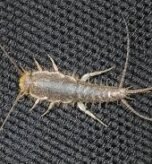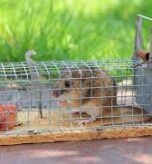The carpet beetle is a significant pest concern in homes, warehouses, and museums where it can find suitable food sources. In regions like California, species such as the varied, furniture, and black carpet beetle inflict substantial damage. While adult beetles mostly feed on pollen outdoors, their larvae pose a major threat inside. These larvae consume a wide range of animal-based products, causing extensive damage to carpets, clothing, furs, and stored foods. An infestation can go unnoticed for a long time, allowing widespread damage to occur. This guide provides the essential identification, management, and prevention strategies for effective carpet beetle control.
Identifying a Carpet Beetle Infestation
Accurate identification of the carphttps://en.wikipedia.org/wiki/Varied_carpet_beetleet beetle and its signs is the first step toward effective management.
Adult Carpet Beetles
Adults are small, oval-shaped insects, usually 1 to 4 mm long. Their color varies by species.
- The varied carpet beetle has an irregular pattern of white, brown, and dark yellow scales.
- The furniture carpet beetle often has a mottled look with black, white, and orange scales.
- The black carpet beetle is shiny black to dark brown and slightly larger.
Adults have wings but typically crawl indoors. You will often find them near windows and lights.
Carpet Beetle Larvae: The Source of Damage
The larvae are the destructive stage. They are elongated and covered in dense hairs or bristles, ranging from light brown to black. Larvae avoid light and burrow deep into materials to feed. You can often find them in hidden places like along baseboards, under furniture, or in closets. Unlike clothes moths, they do not create webbing. Instead, look for their shed skins and tiny, salt-like fecal pellets.
Signs of an Infestation
Key indicators of a carpet beetle problem include:
- Visible holes or large, damaged patches on natural fibers like wool, silk, or leather.
- Shed larval skins and fecal pellets in dark, undisturbed areas.
- Sightings of adult beetles near windows or lights.
- Live larvae crawling near baseboards, furniture, or in closets.
- An increase in dead insects or old spider webs, which they also eat.
- Itchy skin or rashes on sensitive individuals, caused by an allergic reaction to larval bristles.
Integrated Pest Management (IPM) for Carpet Beetles
Controlling a carpet beetle can be challenging because the pests can find obscure food sources and spread widely. A successful strategy requires Integrated Pest Management (IPM), which combines sanitation, exclusion, and other methods to provide long-term, safe control.
Non-Chemical Control Methods
Non-chemical strategies are the foundation of effective carpet beetle management.
Sanitation and Cleaning
Good housekeeping is your best defense.
- Vacuuming: Regular and thorough vacuuming removes food sources like lint and hair, as well as the beetles’ eggs and larvae. Pay close attention to carpets, closets, baseboards, and the areas under heavy furniture. After vacuuming an infested area, dispose of the vacuum bag outdoors immediately to prevent re-infestation.
- Steam Cleaning: Steam cleaning carpets and upholstery is also highly effective, as the high heat kills all life stages of the carpet beetle.
- Fabric Care: Clean fabrics are crucial, as food and sweat stains attract beetles. Laundering items in hot water or dry cleaning them kills all pest stages. Before storing susceptible items like woolens, ensure they are clean. Store them in airtight bags or containers to prevent re-infestation.
Physical and Environmental Controls
Eliminate food sources by removing accumulations of lint, hair, and dead insects. You should also remove old bird, rodent, and wasp nests, as these can harbor a carpet beetle infestation.
- Temperature Treatments: For items you cannot wash, freezing is an effective option. Seal the item in a plastic bag and freeze it for at least 72 hours at a temperature below 18°F (-7.8°C). Alternatively, you can heat infested items in an oven for at least 30 minutes at 120°F (49°C) or higher. A clothes dryer on the highest safe heat setting also works well.
- Seal Entry Points: Prevent adult beetles from getting inside. Ensure window screens and doors are secure. Seal any cracks in walls or foundations with caulk. Inspect cut flowers for adult beetles before bringing them indoors.
Monitoring Traps
Sticky traps, especially those baited with pheromones, can help you monitor for adult beetles and pinpoint the source of an infestation. Place plain sticky traps on windowsills to catch adults drawn to the light.
Chemical Control (Last Resort)
Chemical treatments should only be a last resort for severe infestations when other methods have failed.
- Insecticide Application: If you use an insecticide, choose one labeled for carpet beetle control and follow the directions carefully. Apply it as a spot treatment to specific areas like the edges of carpets, under furniture, in closets, and in cracks where lint collects. Do not spray clothing or bedding directly.
- Fumigation: For heavily infested furniture, fumigation is often the most effective method. This process uses a lethal gas in a sealed chamber and must be performed by a licensed professional. It does not prevent re-infestation.
When to Call a Professional
While you can manage minor infestations yourself, severe or widespread problems often require a professional pest control company. Professionals have access to more potent products and the expertise to apply them safely.
Preventing Future Infestations
Sustained prevention is key to avoiding another carpet beetle problem.
- Maintain a Clean Environment: Consistent vacuuming and careful cleaning minimize food sources and hiding spots.
- Properly Store Items: Keep clean woolens, silks, and other natural fibers in airtight containers or garment bags.
- Seal Your Home: Regularly check and seal any cracks or gaps in your home’s exterior to prevent adult beetles from entering.
- Inspect Incoming Items: Always check secondhand furniture, rugs, and cut flowers for any signs of a carpet beetle before bringing them inside.
Conclusion
Effectively managing a carpet beetle infestation requires a proactive and multi-faceted approach. By understanding their life cycle, diligently cleaning, and using targeted controls when necessary, homeowners can protect their belongings. Persistence is the key to long-term success.



